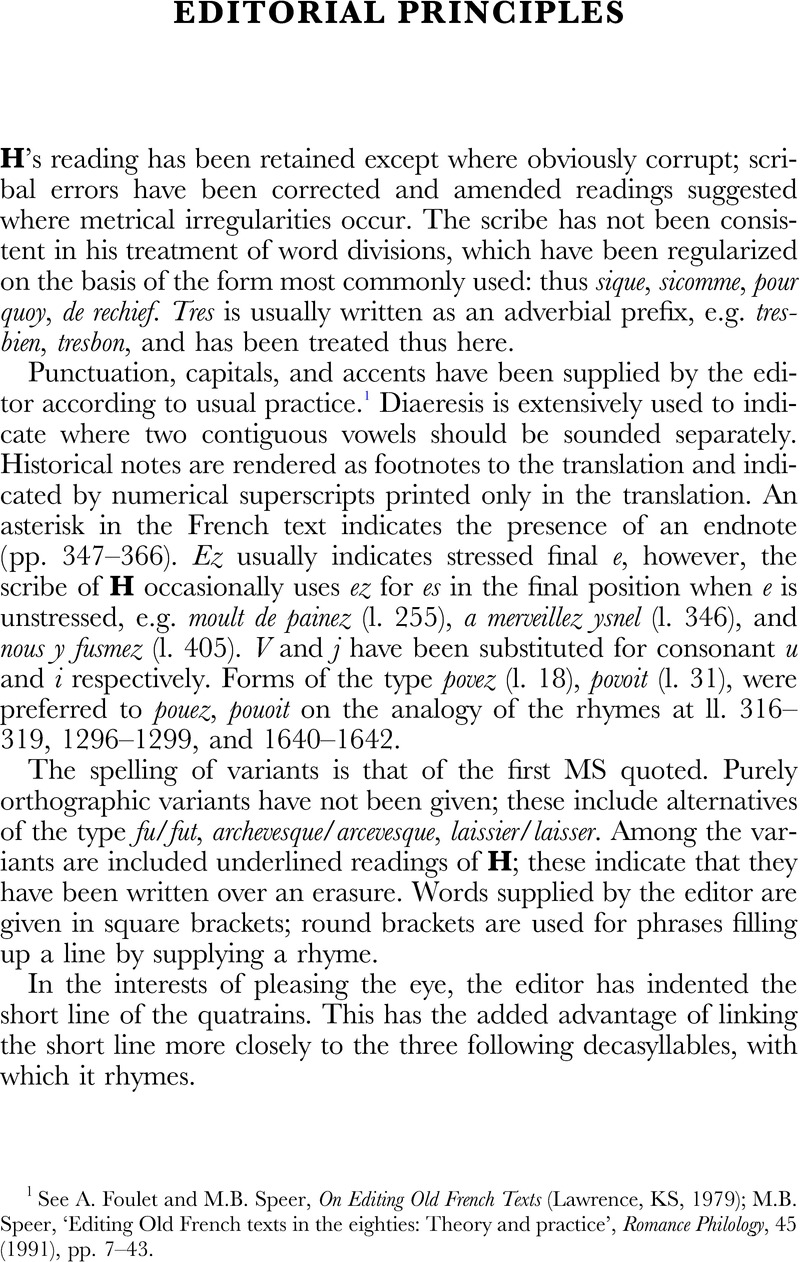No CrossRef data available.
Published online by Cambridge University Press: 05 June 2023

1 See Foulet, A. and Speer, M.B., On Editing Old French Texts (Lawrence, KS, 1979)Google Scholar; Speer, M.B., ‘Editing Old French texts in the eighties: Theory and practice’, Romance Philology, 45 (1991), pp. 7–43Google Scholar.
2 Valerius Maximus, Facta et dicta memorabilia, trans. Simon de Hesdin, Books I–III, ed. M.C. Enriello and others, www.pluteus.it.